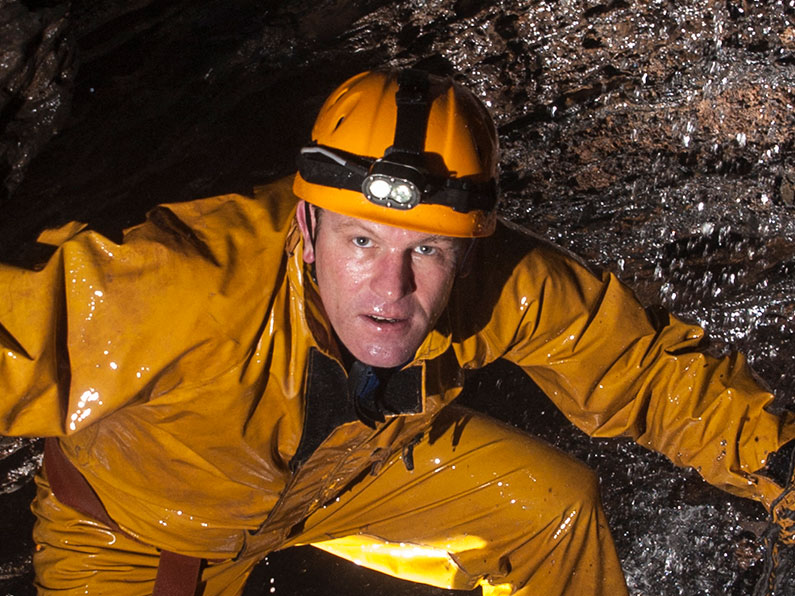A talk by Peter Glanvill
The Rushing Water and the Frozen Deep
Peter Glanvill, who has been caving for over 50 years, visited the Library on 11th October to tell us about the cave systems beneath the Mendip Hills. We were treated to countless illustrations as he spoke, photographed mainly by Peter over his long caving career.
He began his talk with an introduction to the structure of the Mendips. The general form of the hills was developed by erosion, and they were once considerably higher and steeper 200 to 300 million years ago. Erosion created a plateau featuring gorges, dry valleys, screes and swallets. These are complemented underground by a large number of caves, both beneath the plateau and at the base of the Southern escarpment.
The Mendip Hills are well known for their caves, particularly the show caves at Wookey Hole and Cheddar, but the source of the water that emerges at these points is still not fully understood. Peter described the cave systems that feed the river that rises at Cheddar, including The Frozen Deep (see below) and another that is the deepest system so far found on the Mendips, as well as several caves noted for their impressive stalactite formations.
Cheddar Gorge was formed not through the collapse of a giant cave but through erosion by meltwater during warm spells during ice ages. Caves off the Gorge include Bone Hole, Spider Hole, Reservoir Hole, Gravel Gallery, Golgotha and the largest underground cave chamber in the UK, The Frozen Deep.
The Frozen Deep was finally reached in 2012, having been thought to exist since 2008 when Peter assembled a team to clear impenetrable rockfalls. After years of probing numerous blind alleys in the cave system known as Reservoir Hole, they reached Resurrection, a massive open rift. The Frozen Deep has to be accessed from a passage 30 feet above the floor of Resurrection. To get from one end to the other takes close to ten minutes, and the floor area is big enough to fit in about 6 of the naves of Wells Cathedral. 30 metres high and 60 metres long, the stunning formations of stalagmites and stalactites include a 7-metre tall stalactite.
At Velvet Bottom, Glebe Swallett and Lower Flood Swallet were first opened by the massive flood of 1968. The greater part of the cave was discovered in the early 1980s by William (Willie) Stanton, a pioneering member of the Mendip caving community.
The Mendip Caving group spent over 27 years of almost continuous digging to yield one of the most attractive caves in Britain, Upper Flood Swallet. At over 3km long, it is one of several cave systems below the Charterhouse area. The Great Flood of 1968 paved the way for the discovery and subsequent extensions of several major caves. Without the flood, the discovery of Upper Flood, Middle Flood and Grebe Swallet may have been delayed for several years.
Dedicated cavers clearly enjoy the thrill of visiting difficult-to-reach caves with their spectacular formations. Still, they spend much of their time working in cold, wet and dangerous conditions, removing mud and rocks from passages in the hope of discovering yet more wonders of the deep.

